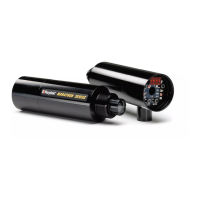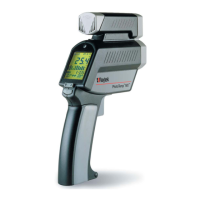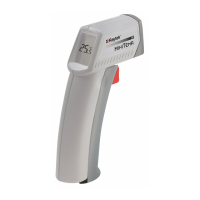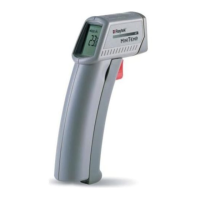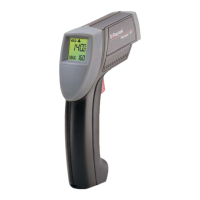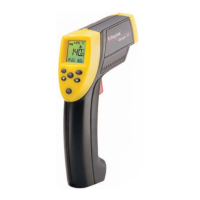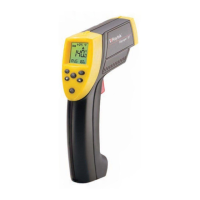Algorithm for a character wise executed XOR operation given in exemplary Basic programming code:
Bcc = 0
For I = 1 To Len(String)
Bcc = Bcc Xor Asc(Mid$(String, I, 1))
Next I
10.6 Burst Mode
10.6.1 Speed
The communications of the sensor are capable of operating in either burst mode or poll mode. Poll mode
requires that a query be issued by a host PC and the unit will respond to the query. In burst mode the
unit transmits a pre-configured burst string at a certain rate.
LT, G5, MT, 3M, and G7 units produce a new temperature read (sample time) every 20 ms.
2M and 1M units produce a new temperature read (sample time) every 1 ms.
However, the communications of the sensor in burst mode are limited by the computer baud rate as
well as the length and content of the burst string.
The Standard burst mode cycle time is 50 ms. If the burst string contains characters other than
“T”, “I”, or “XT” then the unit will transmit the string every 50 ms. Example burst
programmed so that $=TIXTE produces the string <T0150.3 I0027.1 XT00 E0.950> every 50 ms.
The burst mode cycle time of the sensor can be reduced by shortening the length of the burst
string. A Faster burst mode cycle time can be achieved when the burst string is configured to
contain no other characters than “T”, “I”, and “XT”.
Example 1: $=TIXT results in <T0150.3 I0027.1 XT00>
Example 2: $=TI results in <T0150.3 I0027.1>.
When the burst string is configured in this way the unit will transmit the string with 20 ms for
LT, G5, MT, 3M, and G7 models and 5 ms for 2M and 1M models). Due to this faster rate of
data transmission, communications will now be limited by the baud rate of the host. If the
host computer does not have a fast enough baud rate then data will be lost and the effective
data transmission rate will be slower than the cycle time of the unit.
Because the required baud rate is a function of the number of characters in the burst string, the
Fastest burst mode cycle time can effectively be achieved by reducing the number of
